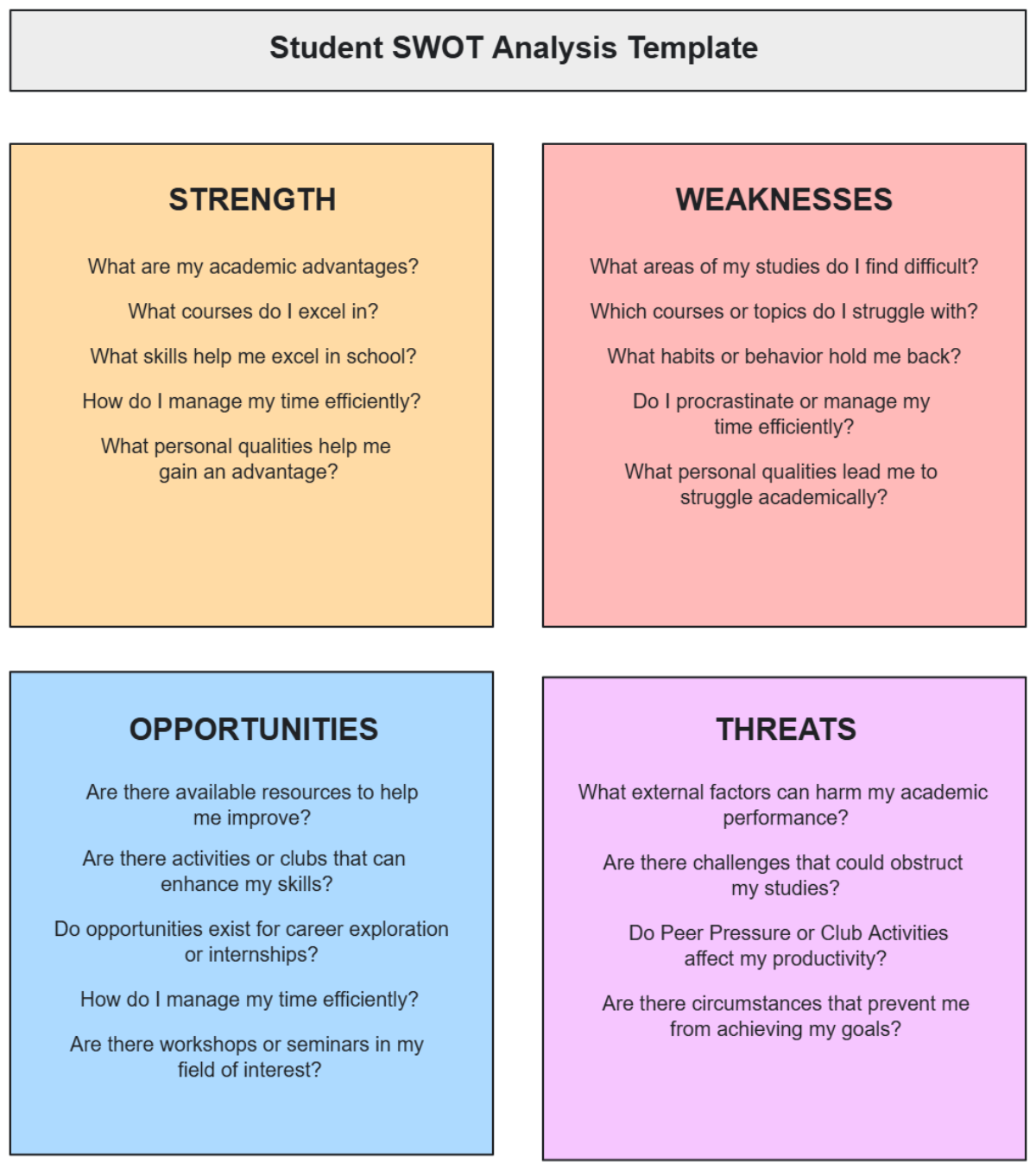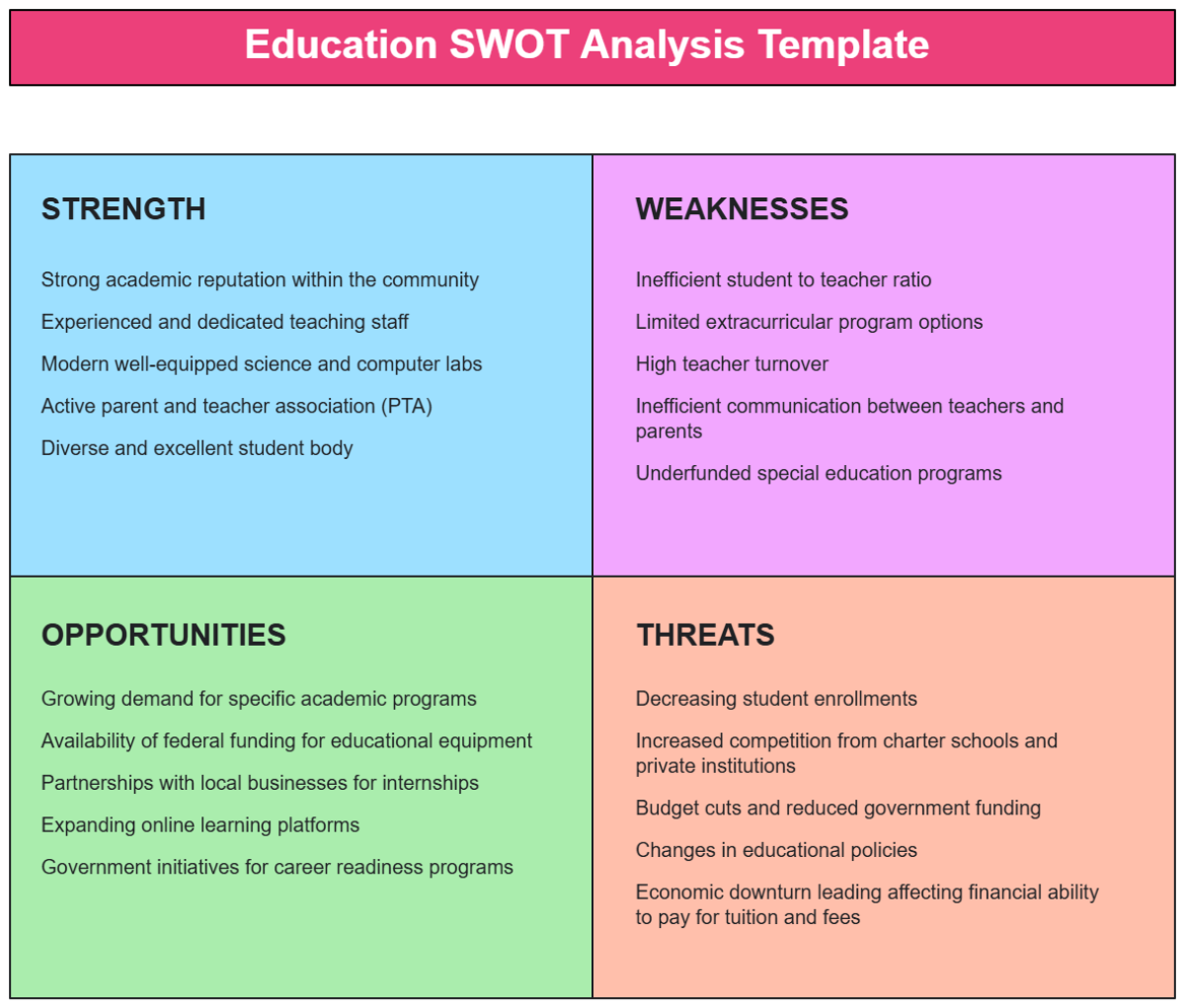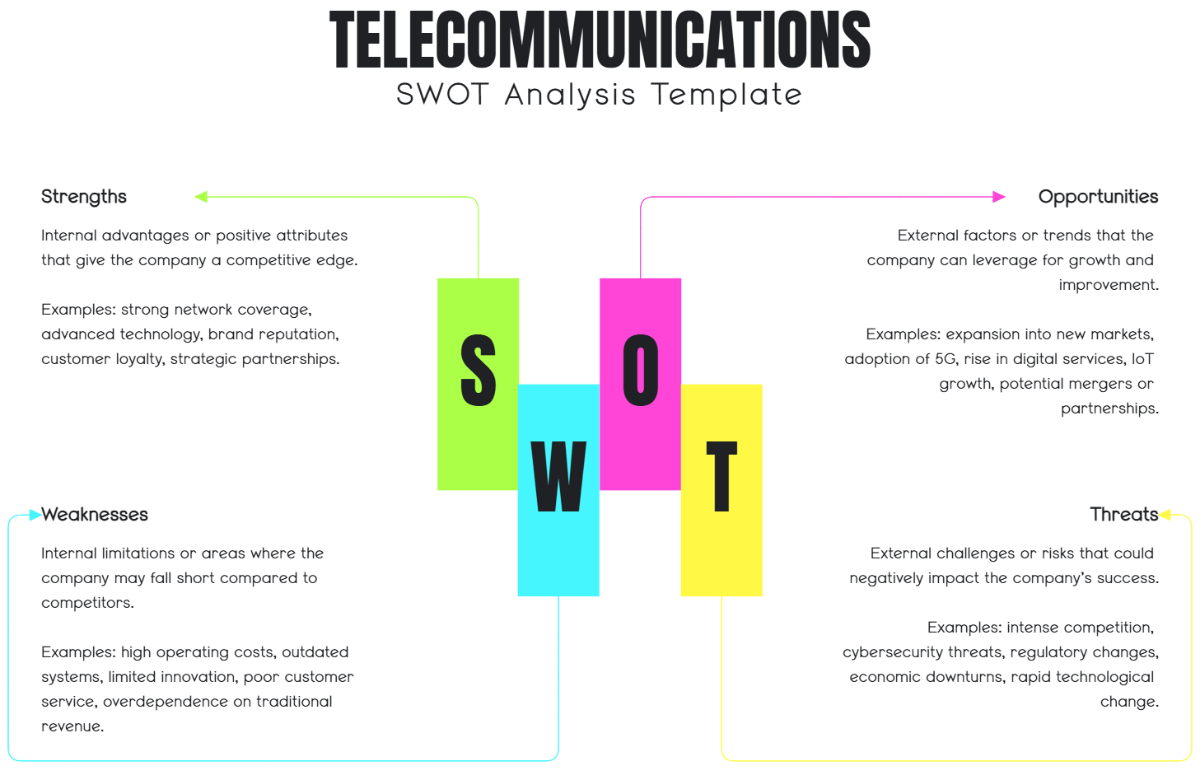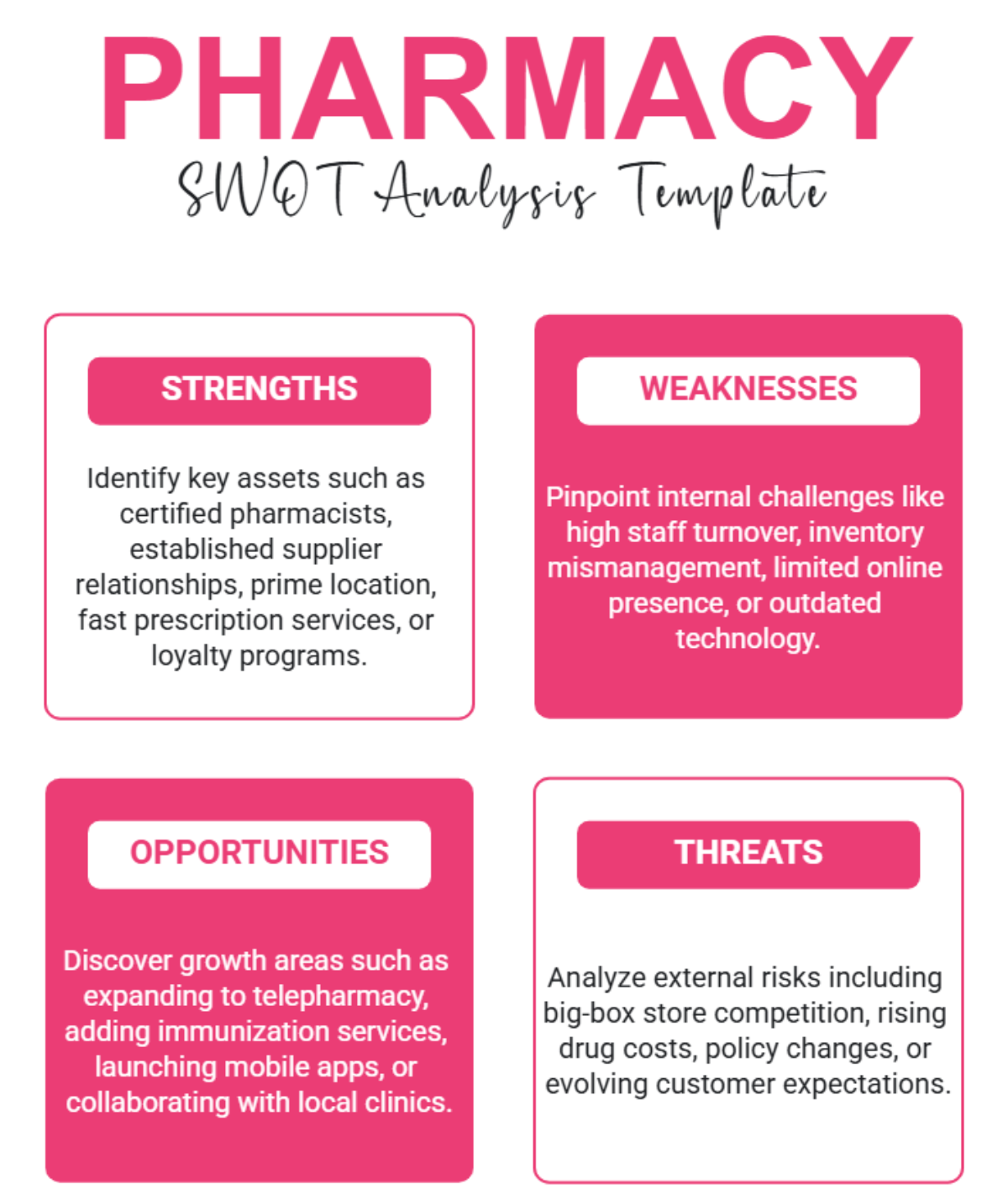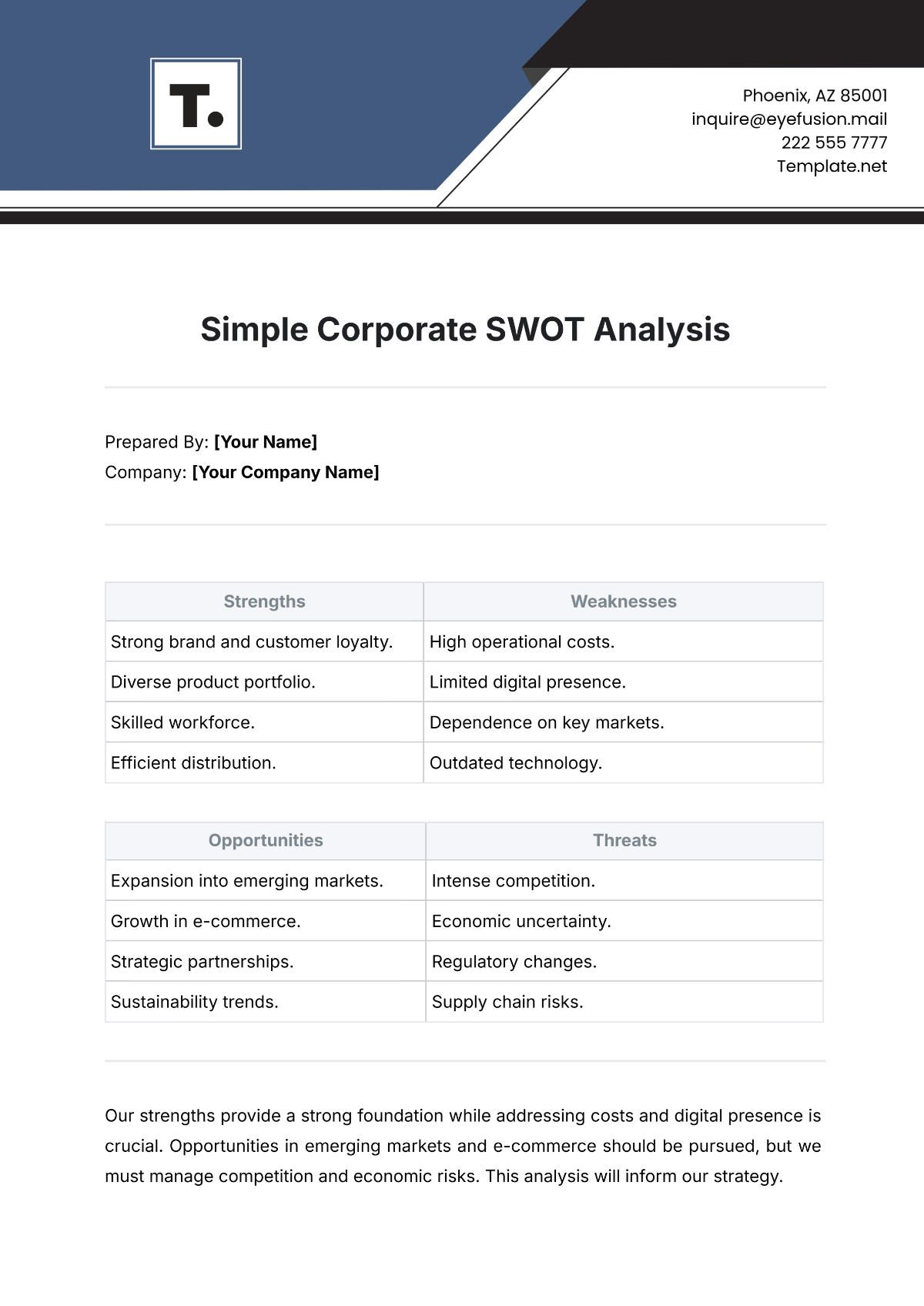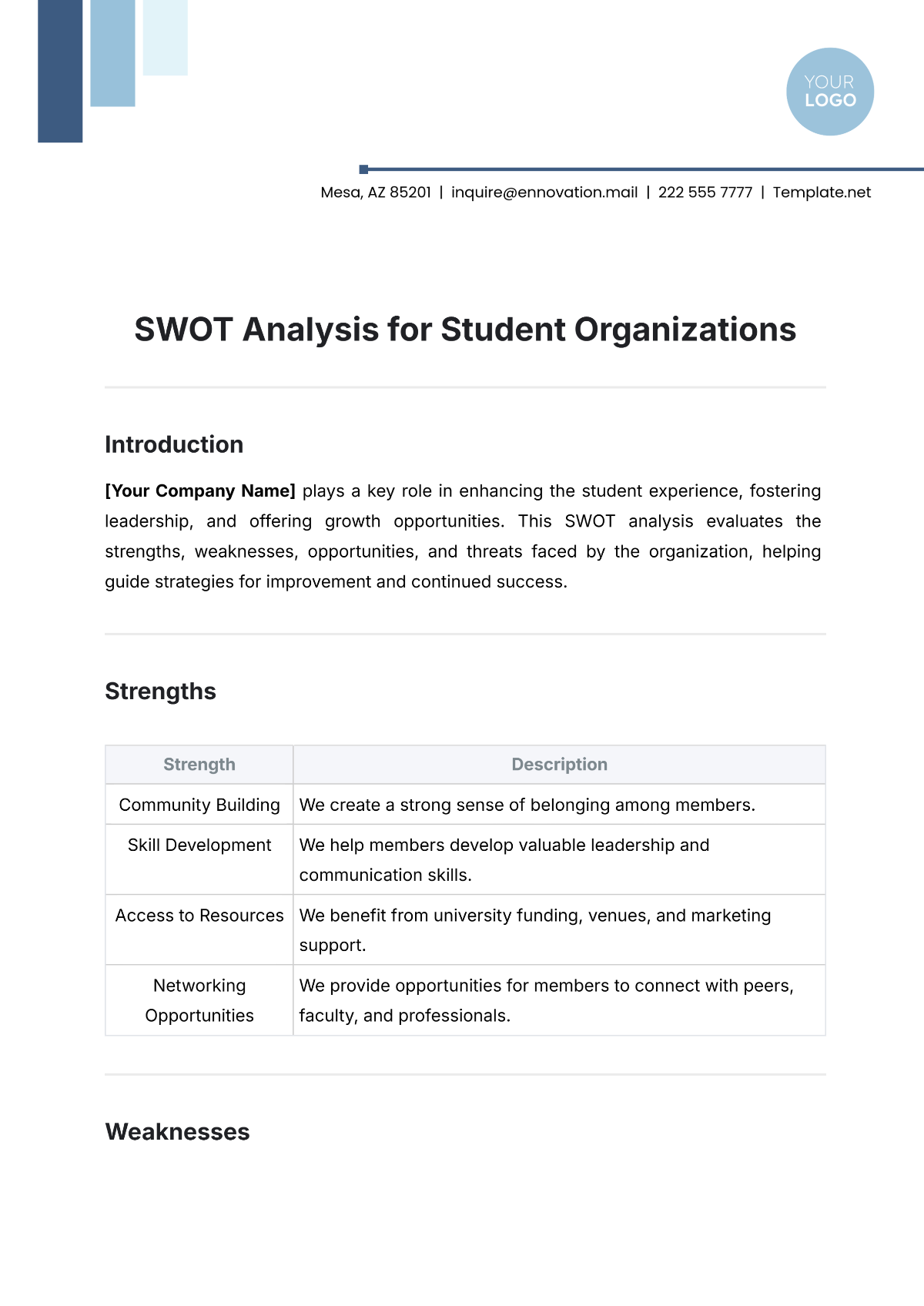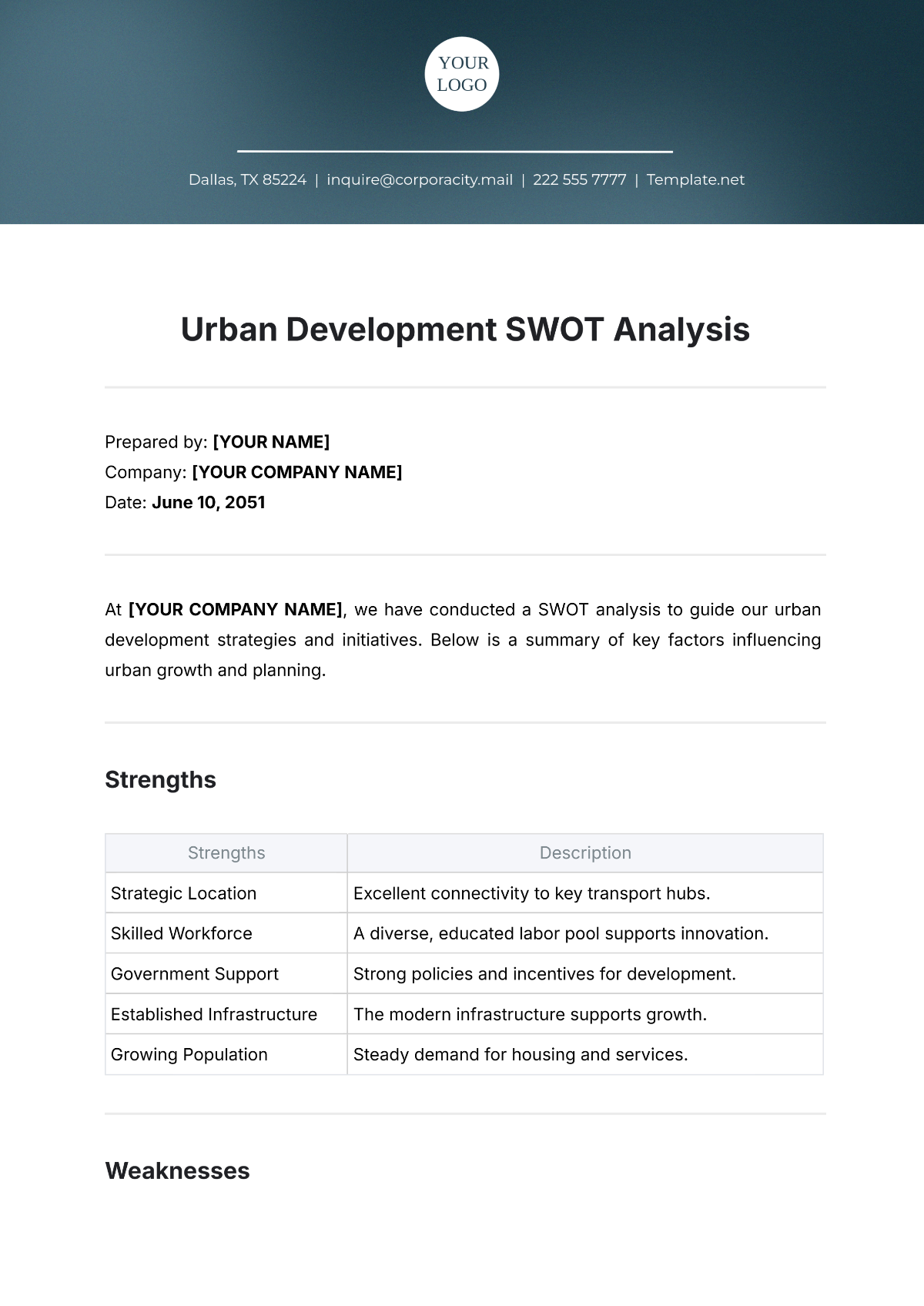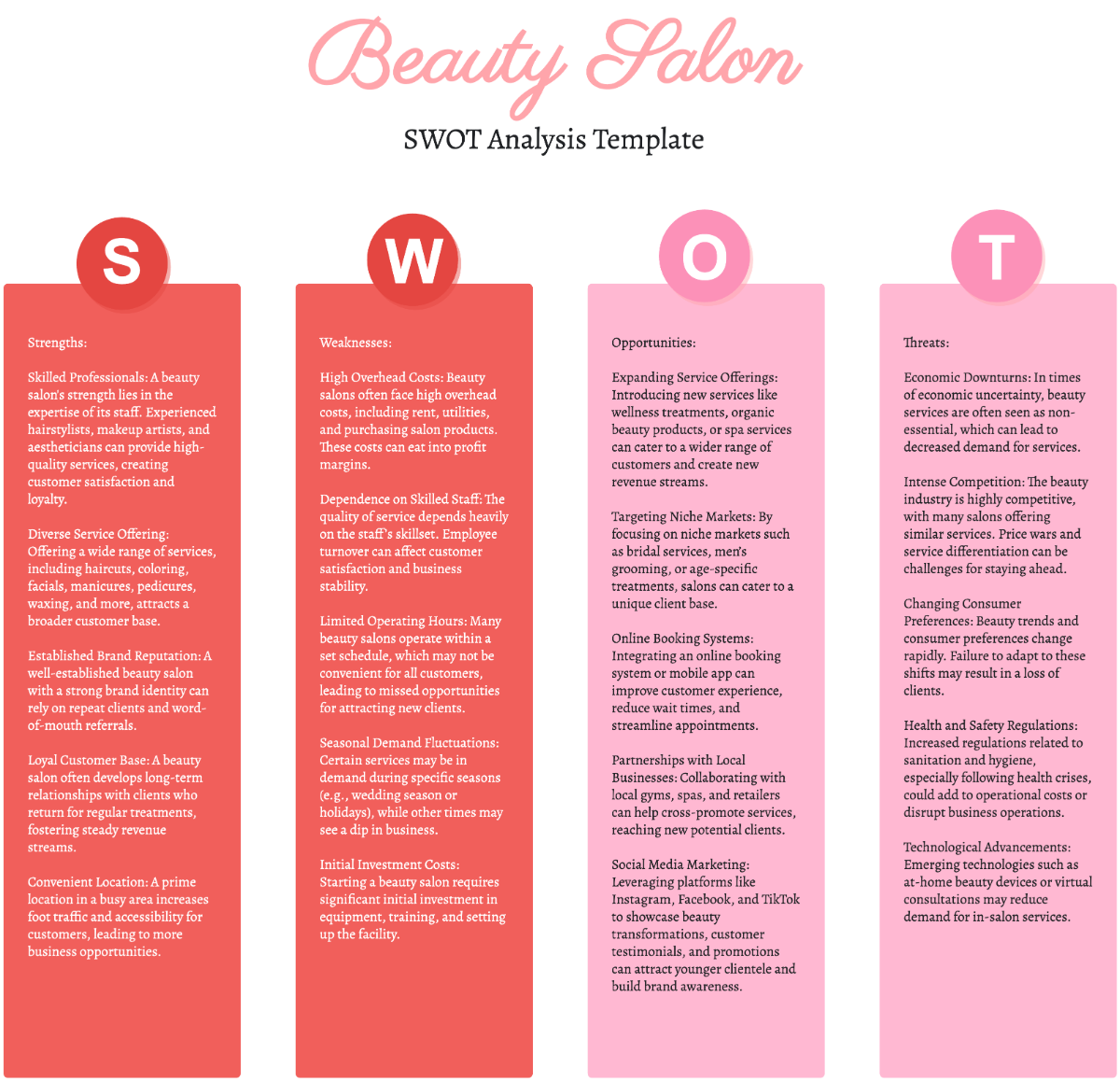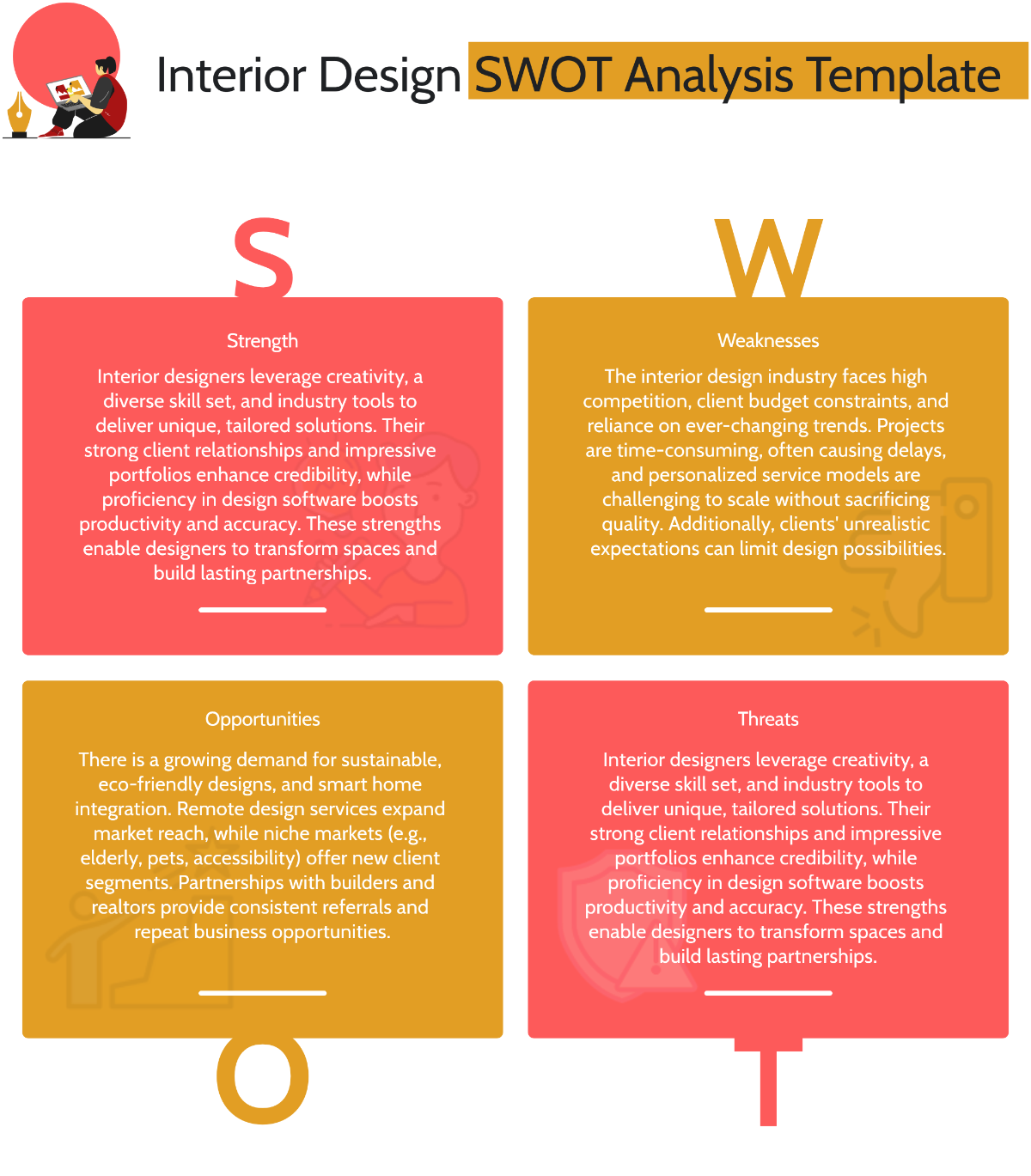Sales SWOT Analysis
Introduction
Shedding light on the key strengths, weaknesses, opportunities, and threats that define the strategic landscape of [Your Company Name]. In a dynamic industry like consumer electronics, understanding these factors is crucial for steering the company toward sustained growth and success.
This analysis delves into the intricate details of [Your Company Name]'s internal capabilities and external challenges, providing a roadmap for informed decision-making. As we navigate through the strengths, weaknesses, opportunities, and threats, you'll gain valuable insights into what sets us apart in the market and the areas where strategic adjustments may be beneficial.
SWOT Analysis Overview
Strengths | Weaknesses |
|---|---|
|
|
Opportunities | Threats |
|
|
Strengths
Positive Customer Perception
[Your Company Name] has meticulously crafted a positive image among consumers, establishing itself as a brand synonymous with quality, reliability, and customer satisfaction. Customer reviews consistently highlight the superior performance and durability of [Your Company Name]'s products, contributing to a positive perception in the market.
Brand Loyalty
The company enjoys a commendable level of brand loyalty, indicating a deep connection between [Your Company Name] and its customer base. This loyalty extends beyond mere product satisfaction; it reflects a trust in the brand's commitment to delivering consistent excellence. Repeat purchases, customer testimonials, and active participation in loyalty programs underscore this loyalty.
Awards and Recognitions
The accumulation of industry awards and recognition reinforces [Your Company Name]' reputation for excellence. Winning accolades for product innovation, design, and sustainability not only validates the brand's commitment to quality but also serves as a powerful marketing tool, influencing consumer perception and attracting a discerning audience.
Brand Consistency Across Platforms
[Your Company Name] maintains a consistent brand image across various platforms, from its products and packaging to its online presence and marketing materials. This coherence in brand presentation contributes to a unified and recognizable identity, reinforcing the trust consumers place in the brand.
Innovation Leadership
[Your Company Name] stands at the forefront of innovation, showcasing a consistent commitment to pushing technological boundaries. The company's dedicated research and development teams continually explore and pioneer groundbreaking advancements in consumer electronics. This innovation leadership not only propels [Your Company Name] ahead of competitors but also establishes it as an industry trendsetter.
Cutting-Edge Features and Functionalities
The products offered by [Your Company Name] are characterized by cutting-edge features and functionalities. Whether it's the integration of artificial intelligence, immersive user experiences, or state-of-the-art materials, the company's commitment to incorporating the latest technologies ensures that its products remain highly desirable and competitive in the market.
User-Centric Design
[Your Company Name] places a strong emphasis on user-centric design, leveraging advanced technology to enhance the overall user experience. The intuitive interfaces, seamless connectivity options, and ergonomic designs of its products reflect a deep understanding of user needs and preferences. This focus on user experience contributes significantly to customer satisfaction and brand loyalty.
Holistic Approach to Product Development
At [Your Company Name], cross-functional teams play a pivotal role in adopting a holistic approach to product development. Engineers, designers, and marketing experts collaborate seamlessly, ensuring that the entire lifecycle of a product, from conceptualization to market launch, is considered from various perspectives. This multifaceted approach results in products that not only meet technical standards but also align with market needs and consumer expectations.
Innovation Through Diversity
The composition of cross-functional teams at [Your Company Name] reflects diversity in expertise, experiences, and perspectives. This diversity becomes a breeding ground for innovation, as team members bring unique insights to the table. The intersection of technical proficiency, creative design thinking, and market awareness fosters an environment where groundbreaking ideas emerge, setting the stage for innovative products that resonate with consumers.
Rapid Problem Solving
Cross-functional teams are adept at rapid problem-solving. In a dynamic industry like consumer electronics, issues or challenges may arise at any stage of product development. The collaborative nature of these teams enables quick identification of challenges and prompt implementation of solutions. This agility is a valuable asset in maintaining product timelines and responding effectively to market demands.
Weaknesses
High Production Costs
The advanced technology and adherence to quality standards contribute to relatively high production costs, impacting overall profit margins. While this commitment to quality is a strength, the associated cost structure poses a challenge in maintaining competitive pricing in the market. Exploring cost optimization strategies without compromising quality is essential.
Limited Product Diversity
[Your Company Name] has a predominant focus on a specific range of products, potentially limiting its market share in diverse consumer segments. The company's success may be susceptible to shifts in consumer preferences or market trends. Diversification strategies, such as expanding product lines or entering new product categories, should be explored to mitigate this limitation.
Dependence on Suppliers
The company relies on a few key suppliers, which poses a risk to the supply chain in case of disruptions. Over reliance on specific suppliers may lead to challenges such as price fluctuations, quality control issues, or logistical disruptions. Developing strategic partnerships with multiple suppliers or exploring vertical integration options can help mitigate these risks.
Opportunities
Growing Smart Home Market
The increasing demand for smart home devices presents an opportunity for [Your Company Name] to expand its product line. By developing and offering innovative smart home solutions, the company can tap into a rapidly growing market segment. This includes products such as smart speakers, home automation systems, and connected appliances.
Strategic Partnerships
Collaborating with other technology companies can open doors to new markets and enhance [Your Company Name]' product offerings through synergies and shared expertise. Forming strategic partnerships can lead to the development of complementary products, joint ventures, or co-branded initiatives, fostering mutual growth and expanding the company's reach.
E-commerce Expansion
The rise of e-commerce provides an opportunity for [Your Company Name] to reach a broader customer base and streamline distribution channels. Expanding the company's online presence, optimizing the e-commerce platform, and implementing efficient logistics solutions can enhance accessibility and convenience for consumers, driving online sales.
Sustainability Initiatives
Embracing sustainability initiatives presents an opportunity for [Your Company Name] to align with evolving consumer preferences. Developing eco-friendly products, reducing carbon footprints in manufacturing, and adopting environmentally responsible practices can not only attract environmentally conscious consumers but also contribute to corporate social responsibility and positive brand perception.
Emerging Markets
Exploring untapped or emerging markets offers [Your Company Name] the chance to diversify its geographic footprint. By identifying and entering regions with growing consumer markets and increasing disposable income, the company can capture new customer segments and establish a strong presence in these evolving markets.
Threats
Intense Competition
The consumer electronics market is highly competitive, with numerous established and emerging players vying for market share. [Your Company Name]must continuously innovate to stay ahead of competitors, differentiate its products, and invest in effective marketing strategies to maintain and expand its market position.
Rapid Technological Changes
The fast-paced evolution of technology poses a challenge, requiring continuous innovation to stay ahead of competitors and meet consumer expectations. [Your Company Name] must stay vigilant about technological advancements, invest in research and development, and ensure its products remain at the forefront of innovation to avoid obsolescence.
Economic Downturns
Economic uncertainties and recessions can impact consumer spending on non-essential items, potentially affecting [Your Company Name]'s sales. The company should develop contingency plans to navigate economic downturns, such as adjusting pricing strategies, focusing on cost efficiency, and diversifying product offerings to cater to varying consumer budgets.
Supply Chain Disruptions
Global events, natural disasters, or geopolitical tensions can disrupt the supply chain, affecting the timely availability of components or finished products. [Your Company Name] should implement robust supply chain management strategies, diversify suppliers, and establish contingency plans to mitigate the impact of unforeseen disruptions.
Intellectual Property Risks
The competitive landscape may expose [Your Company Name] to intellectual property risks, such as patent infringement claims. The company should conduct thorough patent searches, secure its own intellectual property, and implement legal safeguards to protect against potential litigation and threats to its proprietary technologies.
Shifting Consumer Preferences
Rapid changes in consumer preferences and trends pose a threat, especially in the fast-paced technology sector. [Your Company Name] should invest in market research, closely monitor consumer behaviors, and remain agile in adapting its product offerings to align with evolving preferences.
Synthesizing Key Insights
Strategic Alignment: Our strengths, particularly the experienced sales team and innovative product portfolio, align well with the growing opportunities in the SME market.
Operational Improvements: Identifying and addressing weaknesses, such as the limited marketing budget and the need for sales training, will not only enhance our operational efficiency but also contribute to long-term growth.
Proactive Risk Management: Recognizing potential threats, such as intense competition and economic downturns, positions us to proactively manage risks and pivot our strategies when necessary.
Actionable Strategies
Leveraging Strengths: Capitalize on the strength of our experienced sales team by intensifying client engagement and relationship-building efforts. Utilize their expertise to streamline the sales process, ensuring a more seamless customer experience.
Addressing Weaknesses: Allocate additional resources to our marketing efforts to overcome budget constraints. Implement a structured and continuous sales training program to upskill the team, fostering adaptability in a dynamic market.
Capturing Opportunities: Develop and implement targeted marketing campaigns to tap into the growing SME market. Actively seek and establish partnerships with resellers, amplifying our market reach.
Action Plan
Action | Responsible | Timeline |
|---|---|---|
Research potential international markets | Marketing Department | Q1 - Q2 |
Conclusion
This Sales SWOT Analysis serves as a roadmap for navigating the complexities of the software market. By capitalizing on our strengths, addressing weaknesses, capturing opportunities, and mitigating threats, [Your Company Name] is poised for sustained growth and success. The key lies in the proactive execution of the outlined strategies and a commitment to continuous improvement. As we embark on this journey, let's embrace the opportunities ahead and position ourselves as leaders in the ever-evolving software landscape.













